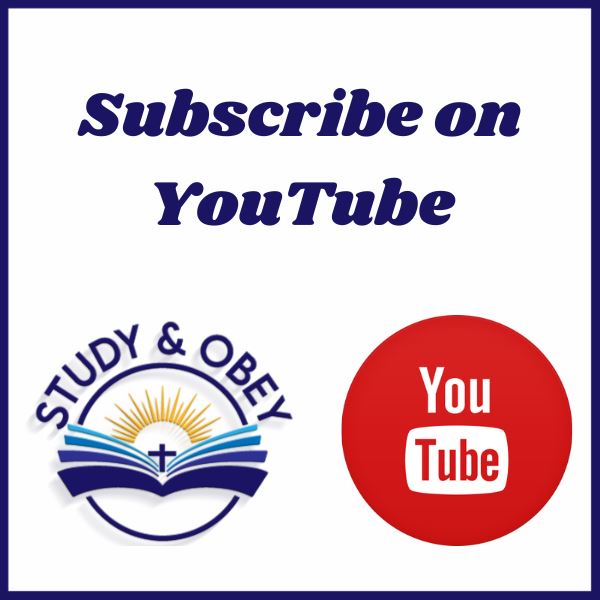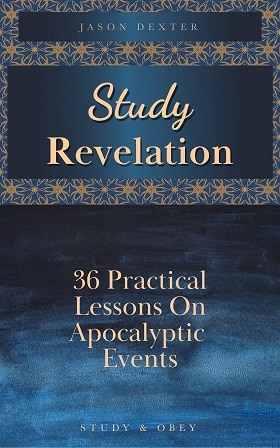These small group studies of Matthew contain outlines, cross-references, Bible study discussion questions, verse by verse commentary, and applications. Visit our library of inductive Bible studies for more in depth inductive studies on this and other books of the Bible you can use in your small group.
Matthew 11:1-19 Inductive Bible Study – Discussion Questions and Verse by Verse Commentary
Matthew 11:1-19
Discussion Questions
When Jesus had finished giving instructions to His disciples, what did He himself do?
What do we learn about modeling from this?
Why do you think John asked this since he had already stated who Jesus was in John 1:29?
Was he having doubt? A change of heart?
What can we learn from Jesus’ answer? Why does He not answer directly with a “yes” or a “no?”
What do you think John would think when he heard Jesus’ reply?
What kind of reasons does Jesus think should persuade people to believe in Him?
What does it mean in verse 7 “a reed shaken by the wind?”
What kind of clothing did John wear? Why?
In what way was John more than just a prophet?
What does Jesus mean in verse 11?
How was the kingdom of heaven suffering violence? In what way were people taking it by force?
Is John Elijah? How could He be Elijah?
What does the parable in verse 17 mean? Who is the one playing the flute and singing the dirge? Who is the one who wouldn’t dance or wouldn’t mourn? What is Jesus saying? What are the religious rulers like?
What do we learn about people from their contradictory reactions to John and Jesus?
Cross-References
James 1:6 – Must believe and not doubt.
Isaiah 42:7, Isaiah 61:1 – Verses from Isaiah predicting what kind of things the Messiah would do.
Isaiah 40:3 – Prophesying the forerunner to Jesus.
Malachi 4:5 – The forerunner will come in the spirit and power of Elijah.
Verse by Verse Commentary
- Jesus was a model – In the last chapter we have seen the instructions Jesus gave to His disciples. After He finished, He sent them out. Notice what Jesus did. He also went out to teach and preach. A good teacher doesn’t just tell others what they should do. He leads by example. He models. Jesus practiced “with them” discipleship. We should follow Jesus’ example. We should disciple others as well and when we do, we should make sure that we are not only teaching truth with our mouth, but modeling right behavior with our actions. Actions speak louder than words. Later in Acts, the religious rulers were amazed at the disciples boldness and confidence and then realized that they had been “with Jesus.” Modeling is a powerful teaching method. What kind of things should a Bible teacher model for new believers? What kind of things should a parent model for his children?
- John asks Jesus if He is the One – In John 1, we see that John already recognized Jesus as the Messiah. Here we see that he wants to make sure. Perhaps in John’s isolation in prison shadows of doubt about whether Jesus is the Messiah begin to creep in to his mind. So he sends his disciples to make sure. From this we see that even faithful and righteous prophets are people like us. They are human. They have flaws and weaknesses. They have temptations. Sometimes they have doubts or questions. We should not put people (even Biblical characters) up on a pedestal as if they are perfect. By seeing their true selves (including their weaknesses) we are encouraged that we too can be effective tools used by God even with our weaknesses. Occasional doubts or stumbling do not disqualify us from serving the Lord. At the same time, John seeks to find a resolution to his doubts/questions. He doesn’t wallow in them, but asks a sincere question to find the answer and solve his question. Application: If you have question or doubts about biblical passages, ask. Do not keep silent and allow those things to build up in your mind. Sincerely study the issues and seek to resolve them. Also take this story and those like them in the Bible as inspiration that God can and does use anyone who is willing, even though we are sometimes weak and lack the faith that we should have.
- Verses 4-6 – Jesus does not give a direct “yes” or “no” answer. Instead He wants John (and his disciples) to think about what they have seen and heard. He wants them to look at the evidence of Jesus’ life and ministry. And He wants them to compare this with the Old Testament prophesies about the Messiah. Why does He not give them a direct answer?
- He encourages them to use their own mind to evaluate the evidence. Here is an example that discovering a truth after critical thinking on one’s own is better than to be fed the answer.
- If they use their own mind to evaluate and come to a conclusion this conclusion will be firm and convincing than a simple “yes” or “no” answer could ever be.
- If Jesus just said, “yes” they might walk away satisfied for the moment. However, after that the next question would almost surely come, “How can we know for certain? After all anyone can say He is the Messiah.”
- Application: We learn from Jesus how to teach others. The quickest easiest solution is not always the best. Is it better to always feed a child or teach him how to eat by himself? As Bible teachers, we should consider how to lead people to the answers and encourage them to use their own minds to critically process information rather than spoon feeding them simple answers.
- Verses 7-8 – These are rhetorical questions. People did not go out for these reasons. They went out into the wilderness to listen to John because he was a prophet.
- Verses 9-14 – What do we learn about John from these verses?
- John was a prophet. (13)
- He had special role as the forerunner for Jesus. He prepared the way for the Messiah and finally even presented Him to the people (John 1:29-30).
- John is the Elijah was was to come. Malachi 4:5. The Old Testament prophesies that a forerunner will come before the Messiah in the “spirit and power of Elijah.” That is John. His lifestyle and character were similar to Elijah. Both lived as kinds of outcasts, ate food from the wild, and wore rough clothing. Both were truth speakers who offended the rulers of their times. Whether John was the literal Elijah returned to earth or a figurative or type of Elijah is not very important. He fulfilled the Old Testament prophesies.
- He is the greatest born of women. Jesus shows what He thinks of John in this passage. John had a very special and important role as the final prophet who prophesies the Messiah’s coming. But then he presents him to the people and sees his own followers go over to Jesus.
- The least in the kingdom of heaven is greater than John. My understanding of this statement is that this shows the different between different ages. John lived in the Old Testament age and therefore he was an Old Testament saint. While he was saved and has an eternal place in heaven, Jesus was not crucified yet. The veil was still in place. Now that Jesus has accomplished His mission every believer can come directly to God. Every believer is adopted as His child. Now in the age of the church, we are even more spiritually blessed in some ways than they were in the Old Testament. We have much to be grateful for. We are very blessed and have a close relationship with Jesus because of His work on the cross.
- Verse 12 – See Luke 20:9-19. John the Baptist was murdered. As Jesus would be. In this verse he is describing the reception of people to the kingdom of God. The kingdom of God should have been warmly welcomed, but the one heralding its coming (John) was killed and the one actually bringing it (Jesus) was also killed. Down in verses 16-19 he continues his indictment of the generation of people who rejected Jesus and His forerunner.
- Verses 15-19 – Meaning of the parable:
- Jesus says that this generation is like children. In some places He uses children as a positive example of child-like faith. Here He uses them as a negative example. Children can sometimes be stubborn and willful and bratty. They may pout and whine and throw fits if they don’t get their way. This is the picture we see of the religious leaders from this passage.
- We played the flute for you. The religious leaders tried to get John to lighten up. As we see in verse 18 they blamed John for His strict, rigid lifestyle. They accused him of having a demon. John did not dance to their tune and they got mad and lashed out at him like a child does when someone refuses to do something his way.
- We sang a dirge and you did not mourn. The religious leaders blamed Jesus for the opposite reasons. He joined parties. He eats and drinks. He associates with sinners. They wanted Him to follow more of their own religious traditions. They put on shows of spirituality and fasting, but Jesus didn’t. He would not follow their mold and they got angry. Finally they accused Jesus of being gluttonous, a drunkard, and associating with sinners.
- The religious leaders should have adjusted themselves to the wisdom of John and Jesus. Here were two very different men with different personalities and lifestyles and yet they shared a common message of truth. The religious leaders refused to look past the different outer appearance. Instead of changing themselves like new wine skins (from a previous parable), they wanted to change Jesus into their own image, lashing out when they could not.
- Application: We should change ourselves into the image of Christ rather than trying to change the Bible to fit our own ideas. Do not bring your own preconceptions to the Word and try to make it fit your own way of thinking. Instead change your way of thinking to the Word.
- Application 2: We should not live to please others John and Jesus lived to please God, not people, and so should we.
- Application 3: John and Jesus were different, but they shared the same message. It is the truth of the Word which unites with other believers not our personalities or appearance. Find common ground to work together with other believers rather than focusing on minor things which shouldn’t divide us, but do.



This is very educational. It is so proper for my Sunday school teaching.
Before we can obey we should learn first.
Very true!
I need to learn more about faithful living.
Thank you for breaking all this down so well for bible studies….Wondering Where Matthew Chapter 17 discussion questions might be located.
Sorry, there are a couple of passages missing that I need to go back and fill in over time.
Jason D, thanks for the in-depth bible study you have put together. It is very informative and I regularly use it for my group bible study. For what it is worth I would like to offer an additional view to Matt. 11:2-3. Is it possible that John was expecting Jesus to get him out of prison? My reason for asking this is that John knew that Jesus was the Messiah to come but was also concerned for his life. In John’s mind I think he would be asking the question; “after all, why wouldn’t the Lord miraculously free me. I spent my life heralding him and now my life is on the line. I don’t understand this. Please go and ask him directly, is he the one who is to come?
Not meant as an argument just a suggestion. No reply necessary.